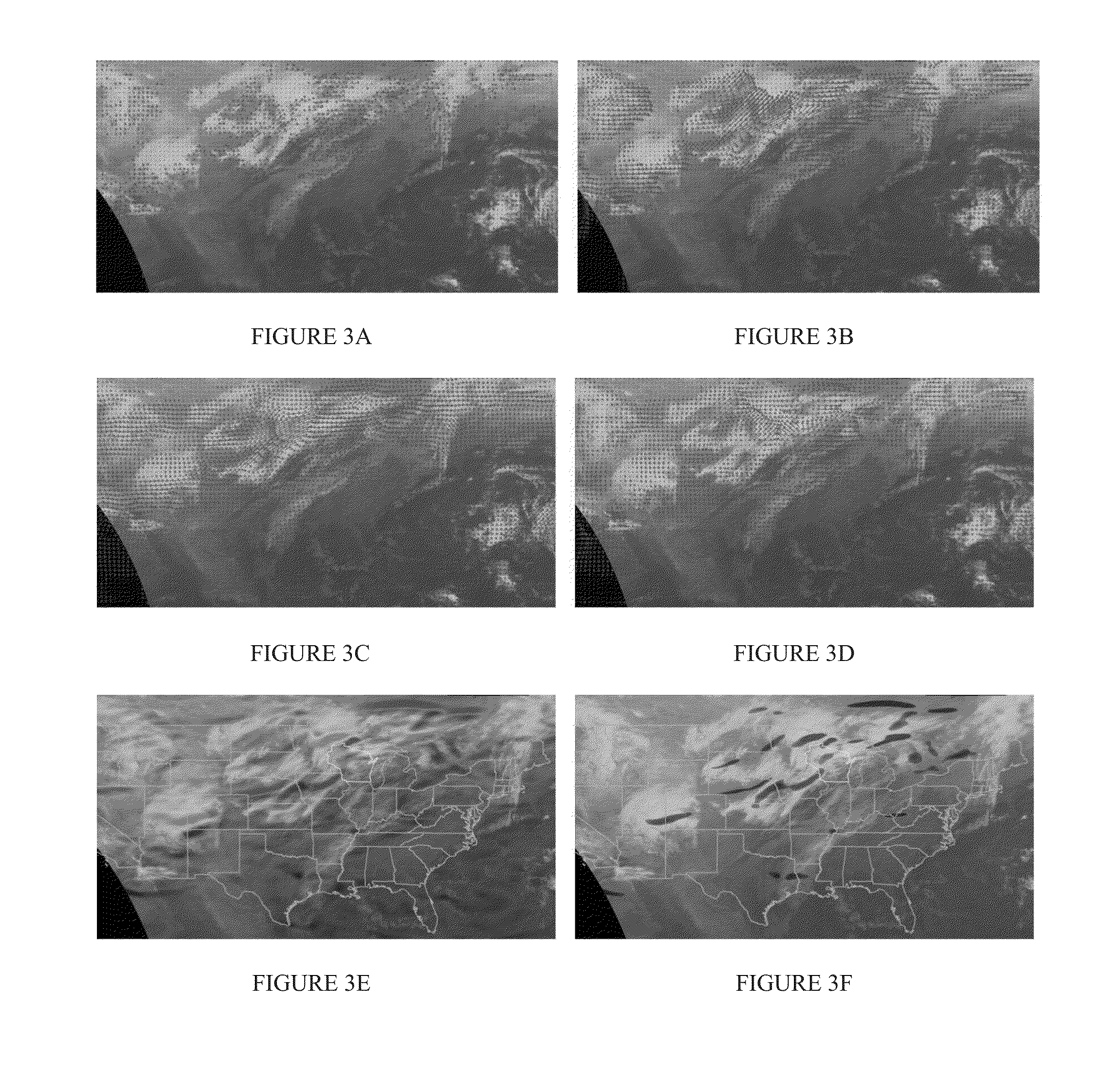Identifying visual storm signatures from satellite images
a satellite image and visual storm technology, applied in the field of weather prediction, can solve the problems of large differences in predictions, insufficient accuracy or reliability of long-term severe storm prediction, and significant damage every year worldwide, so as to eliminate false positives and improve the accuracy of prediction.
- Summary
- Abstract
- Description
- Claims
- Application Information
AI Technical Summary
Benefits of technology
Problems solved by technology
Method used
Image
Examples
case study
[0064]Using the vortex core extraction algorithm introduced in Section II and the classifier trained above, we can automate the process of storm detection from satellite image sequences. Here we present three case studies to show the effectiveness of this approach in different scenarios.
[0065]We choose satellite image sequences from three dates for case studies10. For all cases, the first three consecutive frames of storm detection results are shown in FIG. 5A-5I. The results are consistent along the following frames in all cases, hence these three frames are sufficient to demonstrate the result for each case. On the displayed images, detected storm systems are filled in red or green color (based on the vorticity vectors' directions). Those vortex regions which are detected from the images but classified as negative samples are not filled in color but stroked in blue lines. 10All dates are not used for training the classifier
[0066]The first example shown in FIGS. 5A-5C was from Jun....
PUM
 Login to View More
Login to View More Abstract
Description
Claims
Application Information
 Login to View More
Login to View More - R&D
- Intellectual Property
- Life Sciences
- Materials
- Tech Scout
- Unparalleled Data Quality
- Higher Quality Content
- 60% Fewer Hallucinations
Browse by: Latest US Patents, China's latest patents, Technical Efficacy Thesaurus, Application Domain, Technology Topic, Popular Technical Reports.
© 2025 PatSnap. All rights reserved.Legal|Privacy policy|Modern Slavery Act Transparency Statement|Sitemap|About US| Contact US: help@patsnap.com



